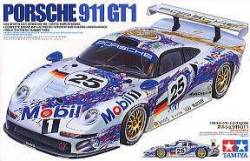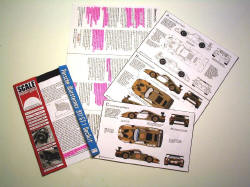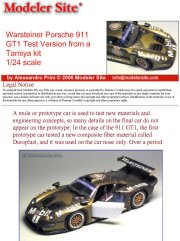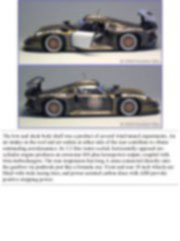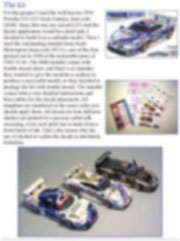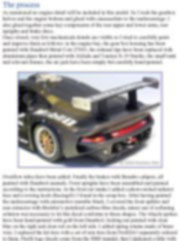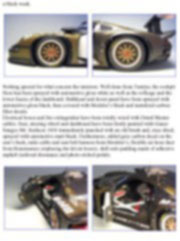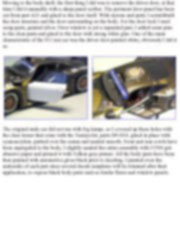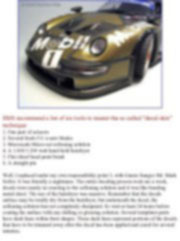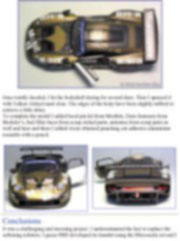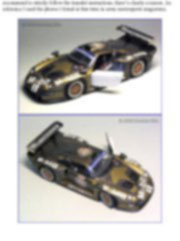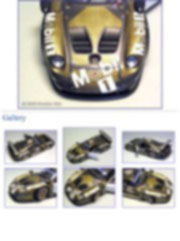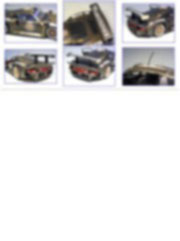|
Cars |
|
|||||||||||||||||||
|
Warsteiner Porsche 911 GT1 Test Version from a Tamiya kit 1/24 scale |
||||||||||||||||||||
|
by Alessandro Prini © Modeler Site |
||||||||||||||||||||
|
Legal Notice No material from Modeler Site any Web site owned, operated, licensed, or controlled by Damian Covalski may be copied, reproduced, republished, uploaded, posted, transmitted, or distributed in any way, except that you may download one copy of the materials on any single computer for your personal, non-commercial home use only, provided you keep intact all copyright and other proprietary notices. Modification of the materials or use of the materials for any other purpose is a violation of Damian Covalski's copyright and other proprietary rights. Read More here > Legal notice A mule or prototype car is used to test new materials and engineering concepts, so many details on the final car do not appear on the prototype. In the case of the 911 GT1, the first prototype car tested a new composite fiber material called Duroplast, and it was used on the car nose only. Over a period of eight months, between the end of 1995 and beginning of 1996, Porsche AG started testing its new 911 intended for the GT1 class. Although the styling of the GT1 retains some resemblance with the conventional 911, it is not the usual 911 but a highly advanced pure race version.
The low and sleek body shell was a product of several wind tunnel experiments. An air intake on the roof and air outlets at either side of the rear contribute to obtain outstanding aerodynamics. Its 3.2 litre water cooled, horizontally opposed six-cylinder engine produces an awesome 600 plus horsepower output, coupled with twin-turbochargers. The rear suspension has long A arms connected directly onto the gearbox via pushrods just like a formula one. Front and rear 18 inch wheels are fitted with wide racing tires, and power assisted carbon discs with ABS provide positive stopping power.
This note is offered in PDF format to be read or printed using Acrobat reader, contact our webmaster > Here Includes more than 30 pics, here we show only the text pages.
Esta Nota es ofrecida en formato PDF, el cual puede ser leído o impreso usando el Acrobat reader, contacte a nuestro webmaster > Aquí Incluye más de 30 imágenes, aquí solo mostramos las paginas de texto.
Big size photos are only available in our PDF format. Support us ordering our notes in PDF > Here |
||||||||||||||||||||




